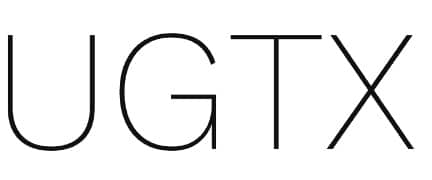In the fast-evolving printing world, UV printing stands out as a game-changer. It uses ultraviolet light to dry (or cure) ink. This innovative method has revolutionized commercial and industrial printing. But what exactly is UV printing, and why is it gaining so much traction?
The Fundamentals of UV Printing
We need to, first of all, recognize and appreciate the basic principles of UV Printing.
Definition and Basic Concept
UV printing is one of the many forms of digital printing. It employs ultraviolet lights to cure or dry inks, varnishes, or coatings on a substrate. UV inks dry (or ‘cure’) through a photochemical process activated by UV light. Thus, it is an instant process.
How UV Printing Works
The process is quite straightforward:
- Ink Application: The laborers print the design onto the substrate using UV-curable inks.
- Instant Curing: As the laborer lays down ink, UV lights follows it, thus curing the ink in an instant.
Key Components in UV Printing
- UV Inks: Industrialists make inks in a special way that it remains liquid until exposed to UV light.
- UV Light Sources: In general, LED or mercury arc lamps emit UV radiation.
- Substrate: The substrate is the material on which the worker prints the image or design. This item can range from paper and plastic to wood and metal.
Advantages of UV Printing
The virtues of UV Printing make it an appreciative tool for relevant people in the field. It allows for instant curing and versatility in printing surfaces. It does not damage the environment and does not compromise durability and quality.
Instant Curing
With the power of UV light, inks dry in an instant. This process speeds up production times, eliminating waiting for prints to dry or set.
Versatility in Printing Surfaces
You can use UV printing on various substrates. Examples range from glossy magazines to acrylic awards, including non-porous substrates. It, thus, opens up vast opportunities, especially in product branding and customization.
Environmental Benefits
UV printing is often dubbed ‘green printing.’ It releases almost zero volatile organic compounds (VOCs) into the atmosphere. It is so because no solvents can evaporate. Furthermore, the process consumes less energy, making it an eco-friendlier option.
Durability and Quality
UV-cured inks are resistant to fading, making them ideal for outdoor products. They’re also resistant to abrasions and moisture, ensuring vibrant and long-lasting prints.
Applications and Uses
UV Printing is an ideal choice for several applications. Commercial printing, product personalization, and industrial applications all have become easier.
Commercial Printing
UV printing offers impeccable quality and durability, from high-gloss magazines to attention-grabbing billboards. Its rapid curing time also ensures faster turnaround for bulk orders.
Product Personalization
In a world that values unique touches, UV printing shines. People use it to personalize phone cases, promotional products, and gifts.
Industrial Applications
Durability is crucial in the industrial realm. UV printing creates labels and components that can withstand challenging conditions. It ranges from outdoor exposure to contact with chemicals. Hence, it offers great durability.
Comparing UV Printing with Traditional Printing
Traditional printing is great in its way. Yet, the pros of UV printing far outweigh those of conventional printing. UV printing offers speed, efficiency, long-term savings, and reduced environmental damage.
Speed and Efficiency
Traditional printing methods need drying time or heat settings to set the ink. Meanwhile, UV printing offers instant curing. This efficiency is particularly helpful for businesses with large-scale printing needs.
Cost Implications
Although more advanced, UV printers often cost more upfront. But, there is long-term reduced waste, faster production times, and fewer maintenance needs. These savings can offset the high initial investment.
Environmental Impact
Solvent-based printing releases VOCs. Whereas, UV printing has a smaller carbon footprint. There is, thus, reduced energy consumption and waste generation. It makes it a favorite among eco-conscious businesses.
Potential Challenges and Considerations
Despite its exceptional pros, UV printing has cons. It has a high initial investment cost and a limitation of materials. Proper safety precautions also need to be implemented for UV printing to materialize.
Initial Investment Cost
The cutting-edge technology in UV printers translates to higher sales costs. Businesses should check their printing needs and ROI expectations before taking the plunge.
Safety Precautions
UV lights can be harmful. It’s vital to ensure operators use protective gear. They also need to undergo training to handle the equipment in a safe manner.
Material Limitations
No doubt, UV printing offers great versatility. Yet, some materials might not be compatible with the process. It is particularly get more dangerous with certain heat-sensitive materials.
Conclusion
UV printing has a myriad of benefits and applications. It is, without a doubt, shaping the printing industry’s future. It has fusion of speed, quality, and eco-friendliness. Hence, it is a compelling choice for businesses across the board. Weighing its advantages against its costs and potential challenges is also essential. But, the future looks bright (and UV-cured) for this printing innovation.
